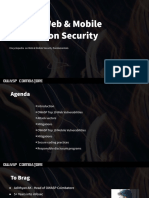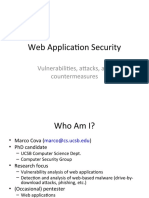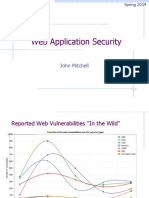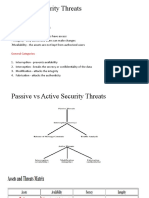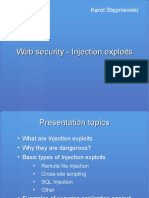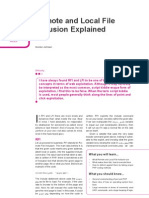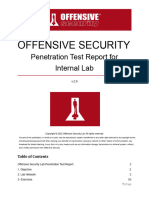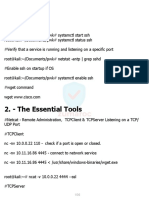0% found this document useful (0 votes)
41 views97 pagesLecture-11-Web Attacks Using DVWA
The document provides an overview of the Damn Vulnerable Web Application (DVWA), which is designed for security professionals, developers, and researchers to practice and understand web vulnerabilities in a controlled environment. It covers various types of web attacks such as brute force, command injection, CSRF, file inclusion, SQL injection, and XSS, detailing their mechanisms and exploitation techniques. Additionally, it emphasizes the importance of secure session management and input validation to mitigate these vulnerabilities.
Uploaded by
shoki.onCopyright
© © All Rights Reserved
We take content rights seriously. If you suspect this is your content, claim it here.
Available Formats
Download as PDF, TXT or read online on Scribd
0% found this document useful (0 votes)
41 views97 pagesLecture-11-Web Attacks Using DVWA
The document provides an overview of the Damn Vulnerable Web Application (DVWA), which is designed for security professionals, developers, and researchers to practice and understand web vulnerabilities in a controlled environment. It covers various types of web attacks such as brute force, command injection, CSRF, file inclusion, SQL injection, and XSS, detailing their mechanisms and exploitation techniques. Additionally, it emphasizes the importance of secure session management and input validation to mitigate these vulnerabilities.
Uploaded by
shoki.onCopyright
© © All Rights Reserved
We take content rights seriously. If you suspect this is your content, claim it here.
Available Formats
Download as PDF, TXT or read online on Scribd
/ 97




